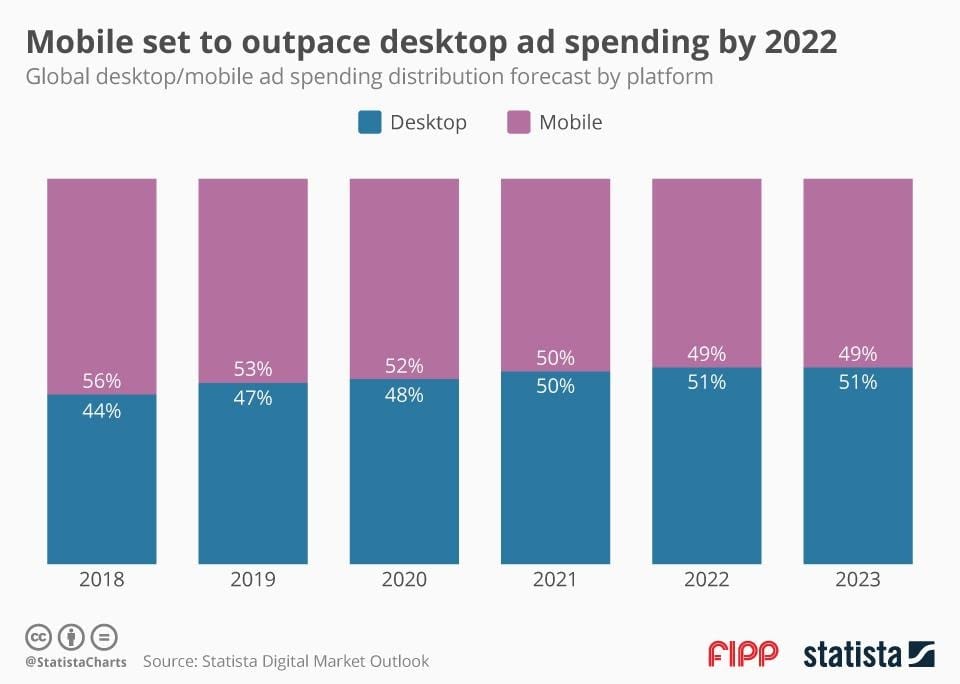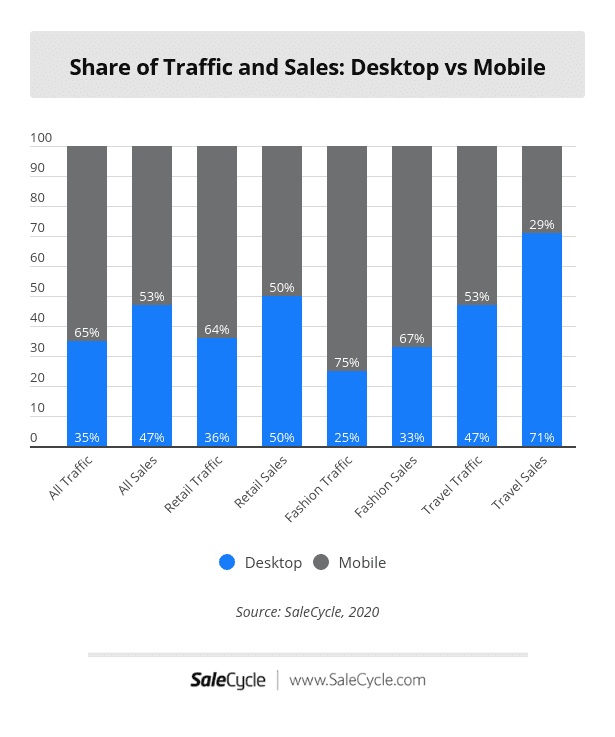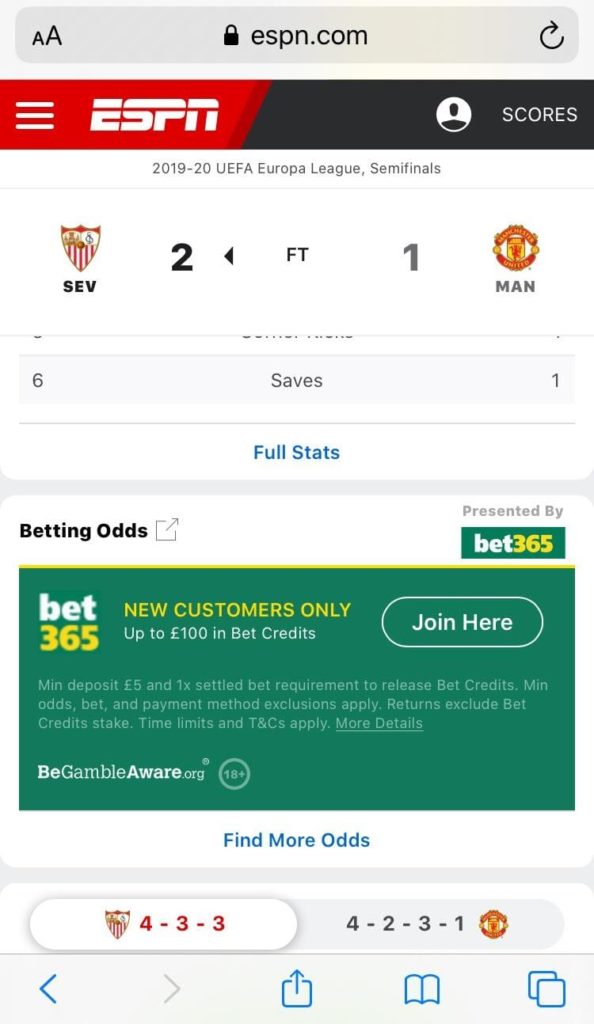A straightforward guide to mobile programmatic advertising
Mobile programmatic advertising sounds complicated. It isn’t. Here’s a straightforward guide to how it works.

Mobile programmatic advertising sounds complicated. It isn’t. Here’s a straightforward guide to how it works.

Ever since the iPhone kickstarted the mobile revolution, advertisers have been struggling to keep up.
While people spend most of their time on their phones, the amount of cash companies devote to their mobile ads has trailed behind.
Here’s a chart of mobile ad spend compared to desktop spend.

And here’s a chart depicting mobile’s share of traffic and sales in 2020.

There’s no mistaking the misalignment between ad spend and device performance.
We’ve written before about the different types of mobile marketing before. One tactic that we didn’t talk about was mobile programmatic advertising.
It’s a quick way for marketers to scale up their mobile advertising. Here’s how it works.
Programmatic advertising uses automated technology to buy and sell advertising space, as opposed to traditional, often manual, methods of digital advertising.
A publisher has an audience–like a newspaper or website–and an advertiser wants to get exposure to that audience. Historically, the publisher and advertiser agreed on a price for the exposure.
Programmatic automates that process. You now allocate ads to the publisher’s audience, in real-time when the publisher’s page loads. If you’re a little confused, this example might clear it up.
You miss an important game, so you head to ESPN to check out the score. You start scrolling through the website and notice a banner ad for Bet365. You might not think much about it.

However, in the background, there’s an auction in real-time to determine whose ad you see.
There may be hundreds–or thousands–of potential advertisers vying for your attention, but only one can win. That’s because there is only one ad unit for this one ad impression.
Using data such as your IP address, location, device type, and browser, each advertiser bids how much they are willing to pay to win the impression–your visit. The highest bid wins–in this case, Bet365–and you see their ad. This all happens in microseconds.
The term programmatic advertising comes from the fact you’re relying on technology to agree on the price and place it–not humans.
When people talk about programmatic advertising, they refer to demand-side platforms (DSPs), supply-side platforms (SSPs), and an ad exchange or marketplace.
A DSP is where advertisers go to choose the audiences and placement types they wish to target and provide the creative. Here advertisers set their bid range to dictate how much they are willing to pay for an impression.
An SSP is what publishers would use to list their inventory. The goal of an SSP is to create as much revenue for the publisher as possible.
DSP’s represent the buyer, SSP’s represent the seller, and the exchange is the marketplace where the purchase happens.
If you’re still confused, this helpful explainer video from Socio Pixels should help.
Here are the steps involved in creating your first mobile programmatic ad campaign. As you’ll see, it’s not hugely different from running an advertising campaign on any of the major social media platforms.
To make it a little more real, we’re going to use a fictional company, Bluth’s Frozen Bananas (BFBs), to explain how it works. They sell direct-to-consumer but are launching their product in a select few supermarkets and want to drive retail sales.
Some high-level questions BFBs ask themselves before getting started are:
After deciding on the campaign goals, BFBs choose a DSP they want to work with. The platform offers the mobile placement options and targeting capabilities they need (more on that below).
Several aspects of mobile programmatic targeting distinguish it from other advertising channels. The two most important targeting options available are location and behavior.
Location targeting
One characteristic that is unique to mobile programmatic, over desktop, is that someone’s mobile device is continuously on them. This means advertisers can leverage both real-time location and related context and derive the location history of a phone.
With that in mind, BFBs decide to target locations only near the retail sites where they are selling their products.
Behavioral targeting
Behavioral targeting is a marketing strategy that uses historical behavior to personalize the types of ads consumers see.
With mobile, you can capture location patterns or app interests (i.e., the person uses cooking, workout, and social networking apps).
Given that its target market is “urban foodie millennials,” BFB targets people interested in NYT’s Cooking app and social networking apps like Instagram and Pinterest.
It also layers in demographic targeting to ensure it reaches its target audience (most DSPs also offer this).
According to Statista, an individual spends 3 to 5 hours every day on mobile, and 90% of that time is spent on apps. That’s why many marketers choose to place ads in apps.
You can also select specific websites that you want to target. BFBs decided to target sites like Bon Appetit, Delish, and AllRecipes.
In the mobile programmatic market, there are four main types of ad units universally available: banners, interstitials, video units, and native units – both in-app and mobile.
The next step for BFBs is to create different ad units they can submit to the DSP. They aim to run different creative formats and see what works.
Once that’s done, all that’s left to do is select a maximum bid–usually done on a cost-per-thousand-impressions (CPM) or cost-per-click (CPC) basis.
Most mobile programmatic advertising campaigns are typically measured by traditional desktop web metrics such as clicks or video views. In the case of BFBs, the team uses a unique coupon code in their messages and can track how many in-store purchases were tied to the coupons.
“Programmatic buying is the gluten of advertising,” Jimmy Kimmel quipped during a presentation for ABC in 2014. At the time he was referring to
Since then, it’s become much more than an industry buzzword.
It’s a way for you to scale up your mobile advertising in an affordable and cost-effective way.
Drew Wilkinson is the Head of Marketing at SimpleTexting. Drew has more than a decade of experience managing successful integrated marketing programs to build brands, raise awareness, and generate demand.
More Posts from Drew WilkinsonA little gratitude goes a long way when it comes to customer loyalty. Use these 21 examples and tips to write a “thank you for your business” message that your customers will love.
ReadYour customers expect to be your priority. The best way to show them they are, is by implementing a conversational support strategy.
ReadStart a text marketing campaign or have a 1-on-1 conversation today. It's risk free. Sign up for a free 14-day trial today to see SimpleTexting in action.
No credit card required